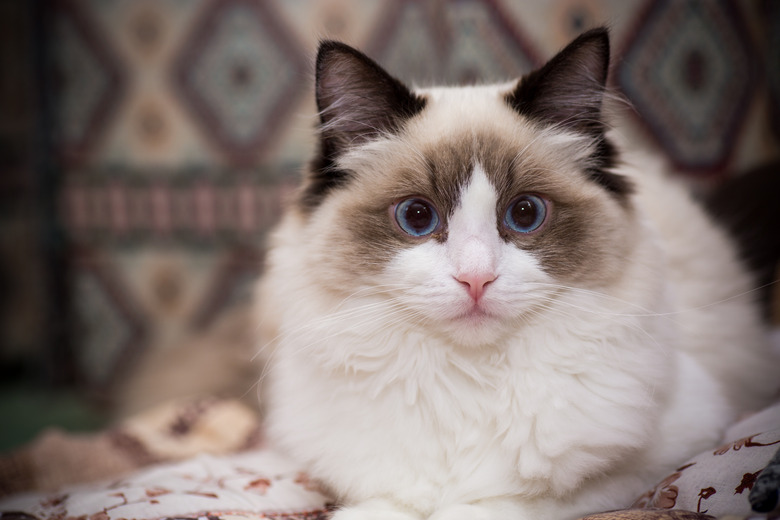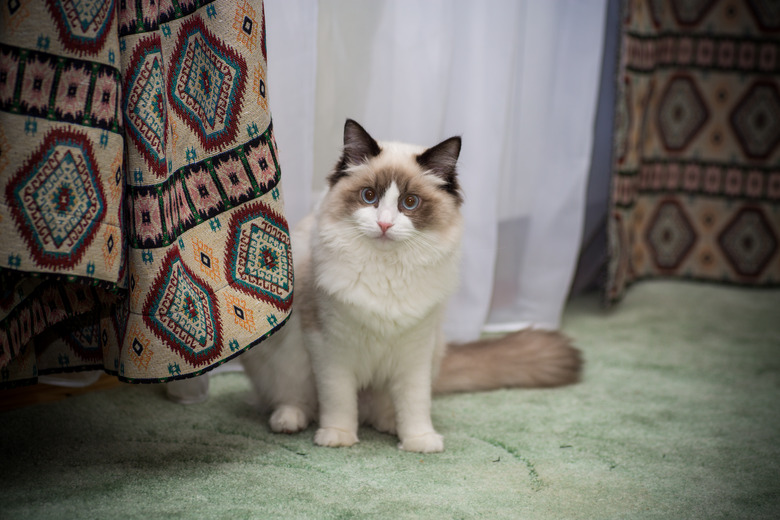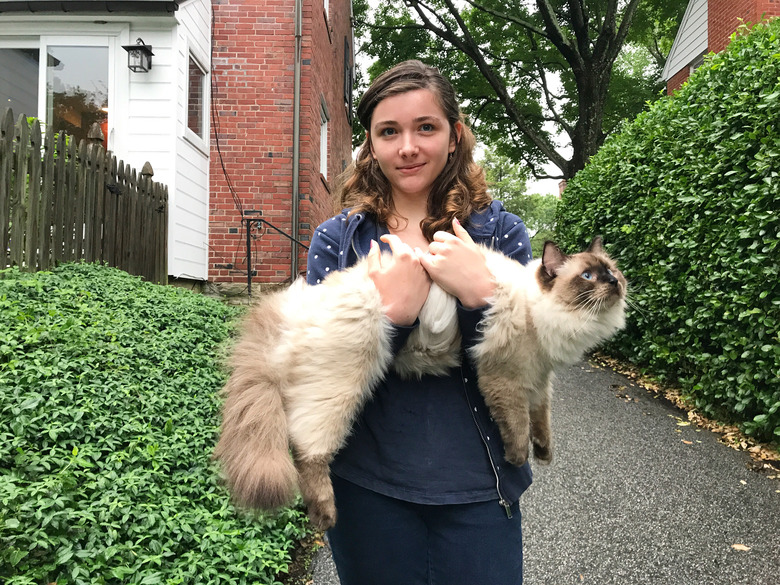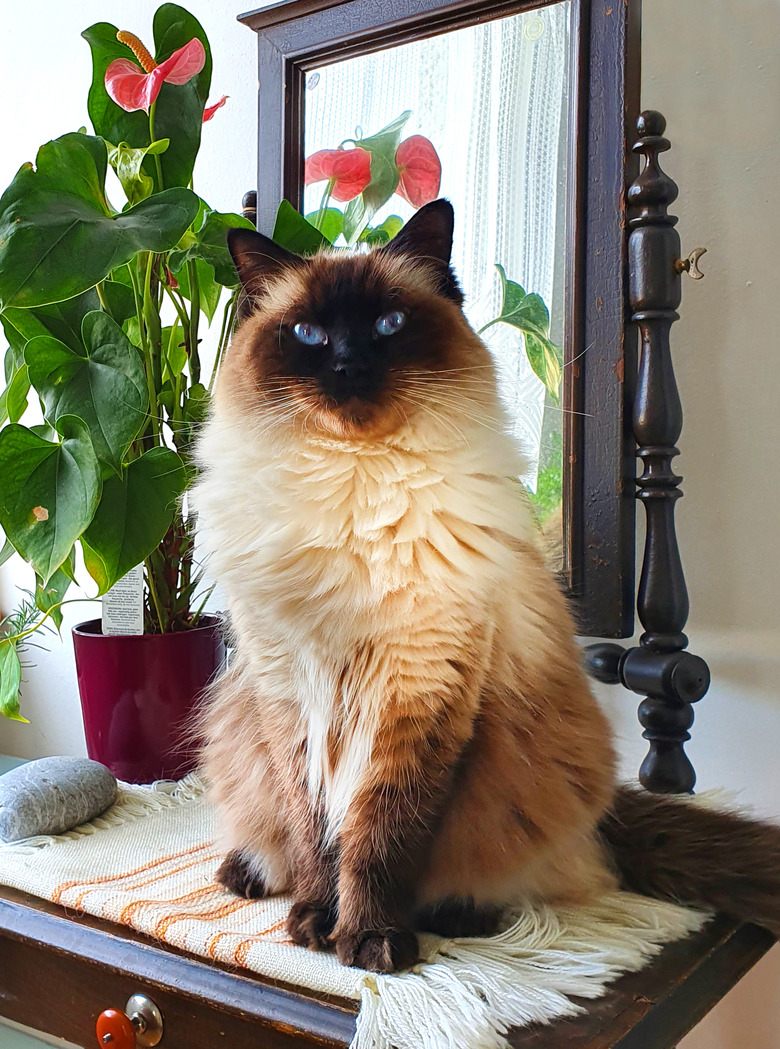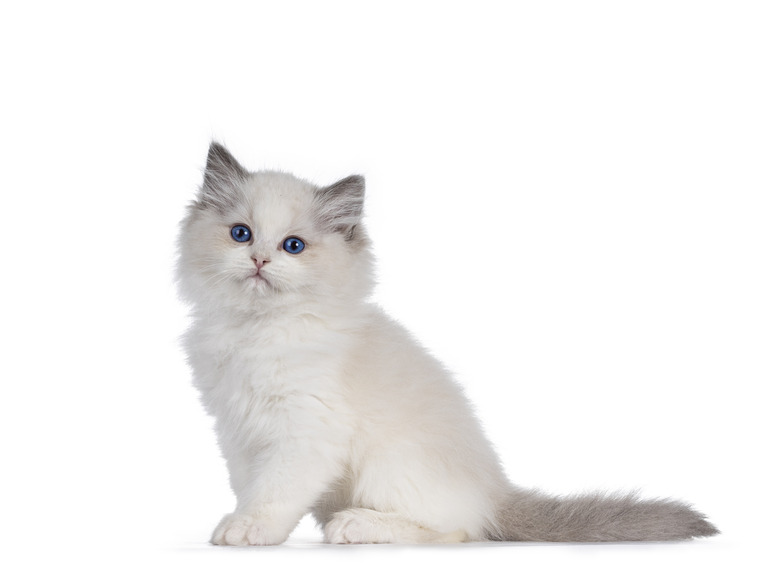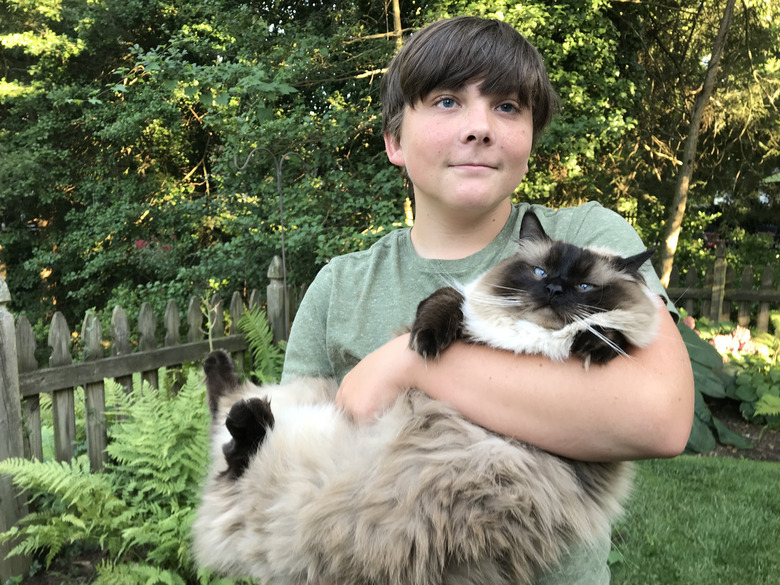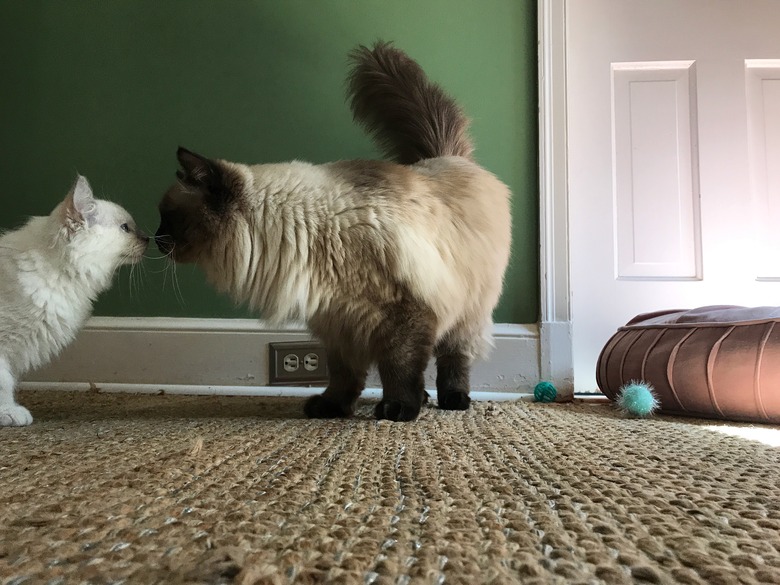12 Fascinating Facts About Ragdoll Cats
The ragdoll cat is a popular cat breed that was developed in the 1960s in the United States. They are pretty, longhair cats that got their name for being so docile that they would go limp like a ragdoll when you pick them up. While that may be a slight stretch of the truth, these cats are sweet, affectionate, sociable and even considered a "dog-like" cat breed. Here are 12 more fun facts about the ragdoll cat.
1. The first ragdoll cat was registered in 1966.
1. The first ragdoll cat was registered in 1966.
The ragdoll cat is not a new cat breed. American breeder Ann Baker, who lived in Riverside, California, registered the first ragdoll cat on December 30, 1966. The first ragdoll cat in the breed category was named Daddy Warbucks. The Ragdoll Historical Society says that what is known about the origin of the breed is that Ann Baker first began to breed these cats in 1963. She borrowed a neighbor's cat that was said to look like a Birman (a longhair cat with color points on its face, ears, and tail but always white paws) and bred that cat with a white angora named Josephine to produce Daddy Warbucks. His offspring would go on to create the four foundational cats of the breed.
2. Breeders started creating more ragdolls in 1969.
2. Breeders started creating more ragdolls in 1969.
The Ragdoll Historical Society says the first record of ragdolls being sold is in early 1969 when a couple bought a breeding pair of ragdolls from Ann Baker. Unfortunately, this couple, named Denny and Laura Dayton, didn't get along with Baker. Baker seemed to have been worried about there being too many breeders, so she created the International Ragdoll Cat Association (IRCA) in 1971. In order to retain an interest in the growing number of breeders, she began franchising catteries that purchased breeding ragdoll cats from her. The breeders didn't want to be part of a franchise, so Baker began losing control of the cat breed she had created.
3. The ragdoll breed is sometimes known as the "puppy cat".
3. The ragdoll breed is sometimes known as the "puppy cat".
The Cat Fanciers Association (CFA) says ragdoll cats tend to be more interested in humans than some breeds of cats. They are considered dog-like in that they are likely to greet you at the door, follow you from room to room, and want to "help" with whatever you are doing. Your ragdoll cat may be a lap cat or they may simply like being near you, but either way it is probably very interested in you. You may even be able to get your ragdoll cat to play fetch with you!
4. They are called ragdolls because they are floppy.
4. They are called ragdolls because they are floppy.
The International Cat Association (TICA) says that the name ragdoll comes from the fact that most of the cats in this breed will go limp like a stuffed doll when held. In fact, some ragdolls aren't lap cats and don't actually like to be picked up and held, but they are very tolerant and will stay relaxed when being carried. They'll definitely cuddle you when they are in the mood to cuddle.
5. Traditional ragdoll cats always have blue eyes.
5. Traditional ragdoll cats always have blue eyes.
TICA's ragdoll cat breed standard calls for blue eyes, and the deeper the better. Some ragdoll blue eyes range from light blue to icy blue to a dark navy blue color. The ASPCA Pet Insurance website says some ragdolls may have only one eye, and may be deaf on the side with the blue eye.
If a ragdoll doesn't have blue eyes, it might be a mixed breed, but not always. Aspen Ragdoll, a ragdoll breeder, says that mink ragdolls can have eye colors that veer into the green range. A sepia ragdoll has rich coat color but does not have a consistent eye color. The eyes of these cats can be anything from green to gold, or brown to blue.
6. Ragdolls are bred to be one of six colors in four patterns.
6. Ragdolls are bred to be one of six colors in four patterns.
The CFA accepts four patterns in a ragdoll cat coat: bicolor, van, mitted, and colorpoint, and those patterns come in six colors: seal, blue, chocolate, lilac, red, and cream. Within that, their color points can be solid, lynx, tortoiseshell, or torbie (a combination of tortoiseshell and lynx). That's a lot of pattern and color combinations, but the ragdoll is quite recognizable.
They typically have white feet and a patch of white on their nose. Colorpoint ragdolls have no white anywhere and look very much like a Siamese. Mitted ragdolls have white feet in the front and white boots. Bicolor ragdolls are mostly white except for the areas where their colors show. Van ragdolls only display color on their mask, ears, and tail.
7. Ann Baker was...a little out there.
7. Ann Baker was...a little out there.
Remember that fact above that said that Ann Baker didn't get along with some of her breeders and franchisees? It may have been more than just not being friendly. Some websites, such as ASPCA Pet Insurance, says that Baker claimed that the ragdoll breed was the last link between aliens and humans. She insisted her cats felt no fear or pain and had been hybridized with skunk genes.
While that's pretty obviously not true, the International Cat Association deepens the mystery of the origin of the ragdoll by stating that Baker believed Josephine's genes had been altered by a veterinary center where she was taken for treatment following being hit by a car. Baker believed that the kittens Josephine had after the car accident were more "floppy" than the kittens she had before the accident.
8. All ragdoll kittens are born white.
8. All ragdoll kittens are born white.
Aspen Ragdolls explains that all ragdoll kittens are born white, unless they are the mink ragdolls, which are born with a creamy brown color that darkens over time. It can take light colors just a few days to start to appear after birth, or darker color points like chocolate and cinnamon can take up to a month to appear. Whichever color they are born with, they will darken over a period of up to two years.
11. Ragdoll cats are prone to a heart problem.
11. Ragdoll cats are prone to a heart problem.
Cats in the ragdoll breed are associated with increased risk for HCM, or hypertrophic cardiomyopathy (HCM). This puts them at risk of sudden cardiac death. According to the University of California Davis Veterinary Genetics Laboratory, a ragdoll cat with two copies of a mutation associated with the disease are at high risk of developing severe signs of HCM, usually between 1 and 2 years of age. Cats with only one copy of this nutated gene are likely to live a normal lifespan. A DNA test can tell you whether your cat has this mutation.
10. Ragdolls are large, and small!
10. Ragdolls are large, and small!
According to the CFA, male ragdolls typically weigh between 15 and 20 pounds, and females between 10 and 15 pounds. Other large cats like the Maine coon and the Norwegian forest cat typically only get to 16 or 18 pounds, making the male ragdoll one of the largest of all cats. Because of the ragdoll's long hair, they often look even bigger than they really are. We say they are small and large at the same time because of the next fact . . .
11. Ragdolls are slow to mature.
11. Ragdolls are slow to mature.
What do we mean by that? CFA says a ragdoll cat won't reach its full size and weight until it is four years old.
12. Ragdoll hair doesn't usually get matted.
12. Ragdoll hair doesn't usually get matted.
Even though cats in the ragdoll breed have lush, long hair, their hair doesn't usually get matted. This is because they lack an undercoat. They will shed during the change of seasons, but they don't have a thick insulating undercoat layer, which reduces shedding and matting. Their hair still needs to be brushed weekly though.
References
- Ragdoll Historical Society: Ragdoll History – The Beginning
- Cat Fanciers Association: About the Ragdoll
- International Cat Association: Ragdoll Breed
- ASPCA Pet Insurance: Ragdoll Cat Facts
- Aspen Ragdolls: Aspen Ragdoll Colors Markings and Eyes
- University of California Davis Veterinary Genetics Laboratory: Hypertrophic Cardiomyopathy (HCM) in Ragdolls
